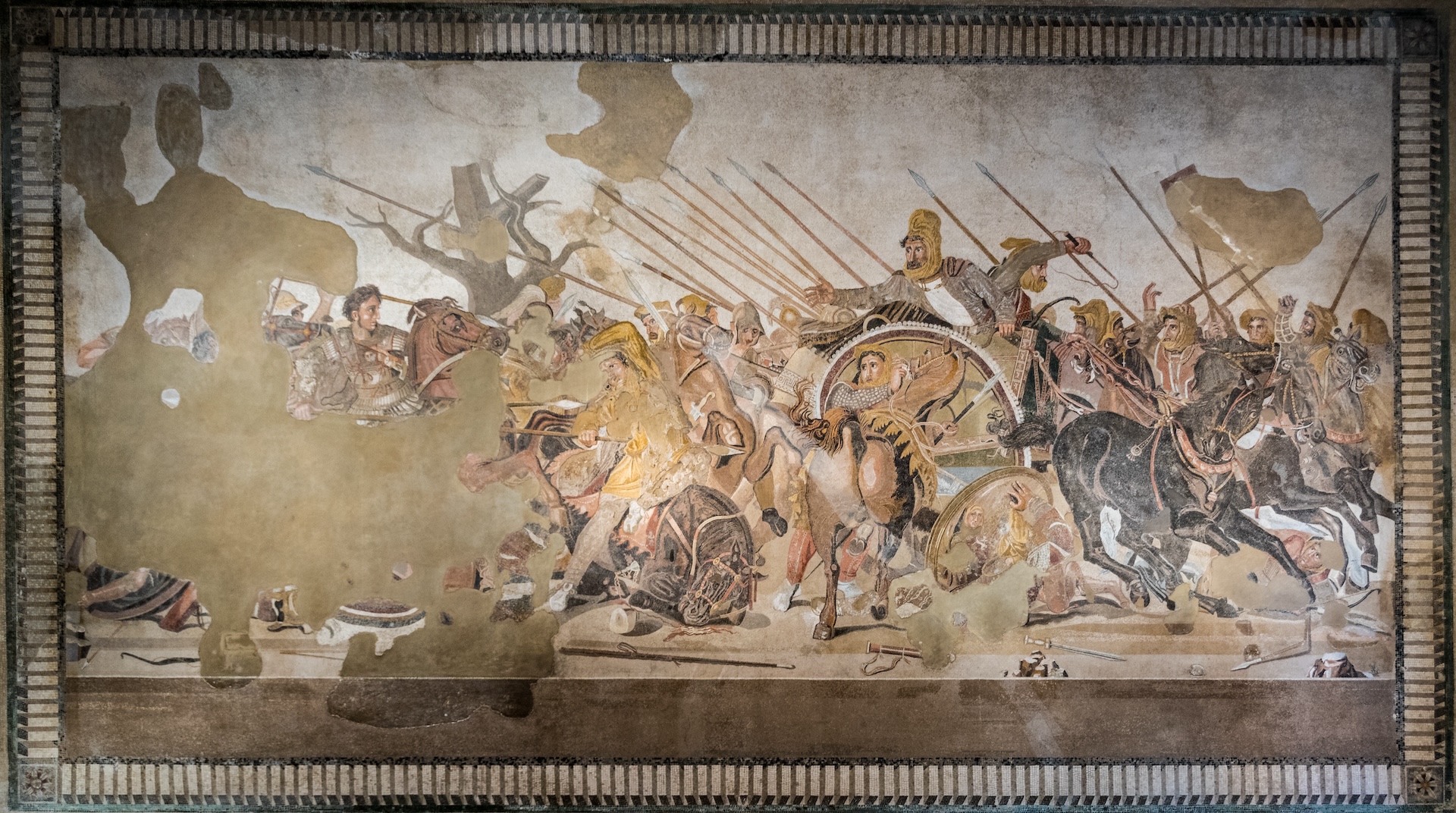Secrets of Alexander the Great mosaic revealed after 1st-of-its-kind analysis
Archaeologists have discovered that the 2 million pieces of mosaic found at Pompeii originated from quarries that stretched far beyond the ancient kingdom of Alexander, according to the latest research.
.
What is the Alexander Sarcophagus?
The Alexander Mosaic, also known as the Alexander Sarcophagus, is a Byzantine-period marble floor mosaic discovered in a Pompeiian-style Roman villa in Alabanda, modern-day Turkey. It is considered one of the greatest surviving Roman mosaics and a key work in the history of Roman art.
The mosaic, dating back roughly 2,000 years, was hidden in Pompeii when the eruption of Mount Vesuvius took place in AD 79. Excavated in 1831, it was found in the upscale residential complex known as the House of the Faun, a "domus" belonging to a wealthy family. Although now displayed in the National Archaeological Museum of Naples, it is situated in southern Italy.
King Darius III and his forces are seen in the background, beneath a solitary tree, which reveals this depiction as the Battle of Issus, fought in 333 B.C. near the present-day Turkish-Syrian border. According to accounts from Arab and medieval sources, including Marco Polo, the locals referred to this battle as 'The Battle of the Dry Tree' (or 'The Solitary Tree').
Related:
Actually, Alexander III of Macedon, commonly known as Alexander the Great, had ambitious plans, but shortly before his death in 323 BC, he started to Hellenise much of the Persian Empire, notably in Babylon, without attempting to invade Rome, which was still a small city-state in central Italy at that time.
Although Rome had already expanded its territories through various battles, there was little indication that it posed a significant threat to Alexander's vast empire; however, after his death, his generals went on to fight each other, which eventually fragmented his empire and paved the way for Rome to grow into a powerful nation.
In 2020, Naples National Archaeological Museum introduced a restoration project examining the mosaic painlessly. A team utilising relevant methods, including portable X-ray fluorescence (pXRF), which makes use of X-rays to identify elements within an object, carried out the study. They discovered that "the tesserae comprised ten different types of colours skillfully combined to create artistic effects characteristic of the Alexander Mosaic," the researchers stated in their study.
The 10 colours incorporated various shades of white, brown, red, yellow, pink, green, grey, blue, black and a glassy vitreous finish, which exhibited a wide array of micro-textures that were "masterfully combined to enhance the artistic effects of the artworks," according to the academics in the study.

Skilled ancient craftsmen focused particularly on designing Alexander's facial features. It is "made of several shades of pink mosaic tiles with noticeable variations in shine caused by the tiles' different chemical compositions," they mentioned in the study. Points like these demonstrate why his face is "likely the most famous and well-known depiction in ancient art," they pointed out.
"Stonework composed of white crystalline marble from the Apuan Alps quarries in Italy, which was initially extracted for marble in the 1st century BC and had ceased to be used by the 3rd century AD," the researchers stated.
Researchers suggest that the intense pink tile fragments probably originated from Portugal, the yellow blocks could have come from the Roman city of Simitthus in modern-day Tunisia, and the dark red pieces may have been derived from Cape Matapan in Greece.
The team also discovered signs of natural wax and the mineral gypsum, which were likely used as a protective coating during restoration work in recent times, according to the study.
An ultrasound investigation of the mosaic's underside revealed "many empty sections" that may have gone unnoticed due to the addition of gypsum-based materials during the mosaic's transportation from Pompeii to the museum. "These potential vulnerabilities should be taken into account during the restoration process," the researchers stated in their study.
Post a Comment for "Secrets of Alexander the Great mosaic revealed after 1st-of-its-kind analysis"